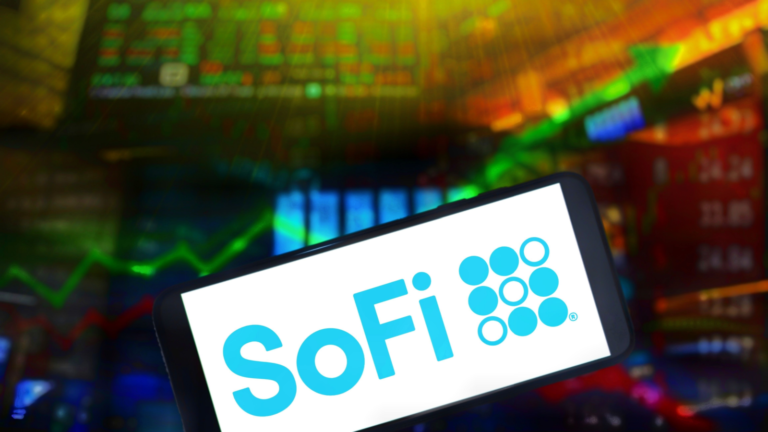SoFi’s (NASDAQ:SOFI) fourth-quarter results, announced on Jan. 31, were quite impressive, as they showed that the fintech firm is growing quite rapidly and has managed to effectively monetize its popularity among millenials and Generation Z. The fintech’s profitability, however, remains low, while the valuation of SOFI stock is still quite elevated. This is a key part of my SOFI stock analysis.
Although I’m much less concerned than I was previously about the quality of the firm’s loan portfolio, I believe that SoFi could still be hurt by high default rates within the next year or two. Also importantly, the Biden administration’s continuing forgiveness of large amounts of student debt is likely to undermine SoFi’s financial results over the longer term.
Given these points, I continue to advise investors to sell SOFI stock.
Impressive Q4 Results, But Profits Remain Low
SofFi grew tremendously last quarter on both the top and bottom lines. Specifically, its revenue soared 35% versus the same period a year earlier to $615 million, while its net income came in at $47.9 million, much better than the loss of $40 million that the firm generated in Q4 of 2022. Also noteworthy is that SoFi added a net total of almost 585,000 new members last quarter, while its total deposits rocketed higher by $2.9 billion to $18.6 billion and the value of the loans held on its balance sheet rose by $1.6 billion. The rapid increase in SoFi’s deposit base will enable it to loan out much more money, greatly boosting its sales and profits.
Even though the firm’s growth was undoubtedly in part attributable to the resumption of student loan payments last quarter, its large gains in the areas of deposits, loan value, and membership show that it is successfully recruiting and monetizing many new customers. That certainly bodes well for its future growth.
On the other hand, however, SoFi”s bottom line came in at a rather low $48 million, while the firm expects to generate net income of just $10 million to $20 million during the current quarter.
The Firm’s Loan Portfolio Remains Worrisome, While Its Valuation Is Still High
In the past, when SoFi sold off very little of its loans, I, along with others, had worried a great deal about the quality of its loans. I noted that many young people with student loans, a group that largely makes up a large percentage of SoFi’s customer base, tend to have large amounts of debt.
For two reasons, I’m less concerned about this issue now than I was previously. First, the company noted that it had sold a significant $1.2 billion of its loans in Q4. Secondly, it reported that the weighted average FICO score of its personal loan recipients was 744, while their “weighted average income” was $171,000. Similarly, the weighted average income of their student loan recipients was $154,000 “with a weighted average FICO of 781.”
Still, individuals with extremely high debt levels can have elevated incomes and elevated FICO scores. Moreover, despite the impressive averages, there could be a significant number of problematic loan recipients among those who have borrowed from SoFi. This is central to my SOFI stock analysis.
Increasing my concern about the latter issue, CFO Christopher Lapointe warned that the firm anticipates that its “default rates (will) continue to normalize to pre-COVID life of loan loss levels of approximately 7% to 8%,” compared with its current default rate assumption of 4.5% to 4.8%. Those appear to be rather high default rates, considering that banks’ average pre-Covid default rates for consumer loans was around 2.3%, according to the Federal Reserve.
SoFi’s relatively high default rates could eventually significantly weigh on its profitability and pull down SOFI stock.
Student Loan Forgiveness and Valuation
The Biden administration continues to forgive significant amounts of student loans. For example, the Department of Education on Feb. 21 disclosed that it had waived $1.2 billion of student loan payments. The administration has waived nearly $140 billion of student loans so far and it has indicated that it expects to keep waiving such loans going forward. In the past, SoFi has said that forgiveness of student loans significantly reduces its revenue and profits by lowering the amount of refinancing that it carries out. As a result, the administration’s loan forgiveness initiative could negatively impact SOFI stock going forward.
On the valuation front, the trailing price-sales ratio of SOFI stock is a rather high 3.66. This concludes my SOFI stock analysis.
On the date of publication, Larry Ramer did not hold (either directly or indirectly) any positions in the securities mentioned in this article. The opinions expressed in this article are those of the writer, subject to the InvestorPlace.com Publishing Guidelines.

